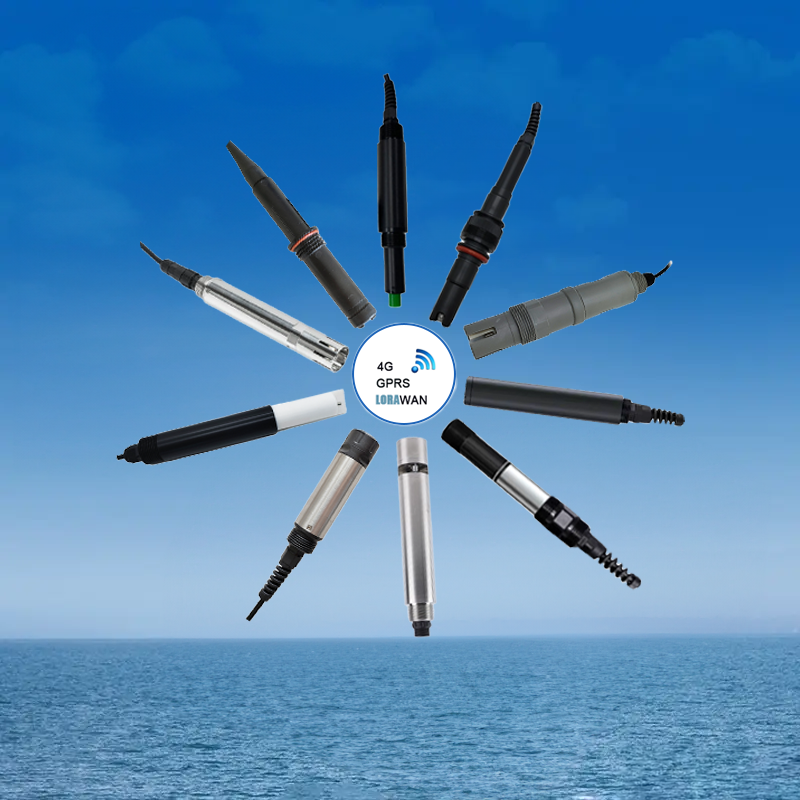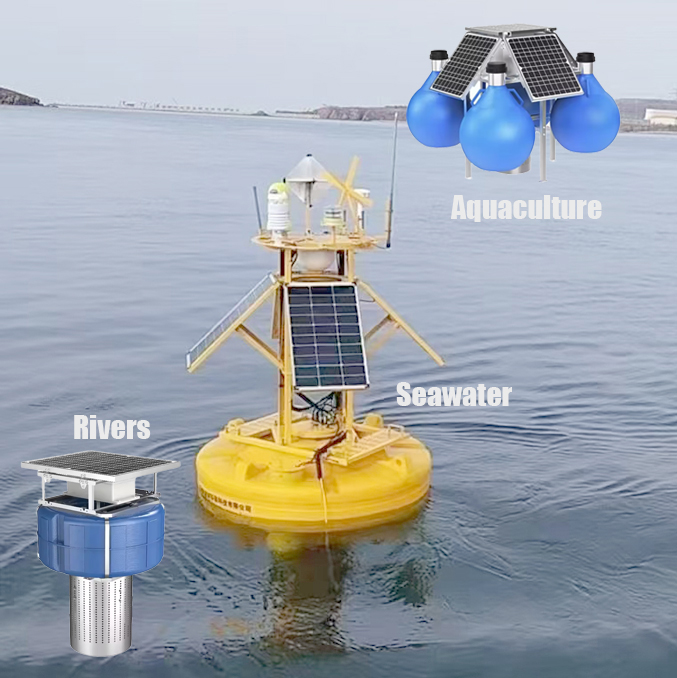The Philippine aquaculture industry (e.g., fish, shrimp, and shellfish farming) relies on real-time water quality monitoring to maintain a stable environment. Below are the essential sensors and their applications.
1. Essential Sensors
| Sensor Type | Parameter Measured | Purpose | Application Scenario |
|---|---|---|---|
| Dissolved Oxygen (DO) Sensor | DO concentration (mg/L) | Prevents hypoxia (suffocation) and hyperoxia (gas bubble disease) | High-density ponds, RAS systems |
| pH Sensor | Water acidity (0-14) | pH fluctuations affect metabolism and ammonia toxicity (NH₃ becomes lethal at pH >9) | Shrimp farming, freshwater ponds |
| Temperature Sensor | Water temperature (°C) | Affects growth rates, dissolved oxygen, and pathogen activity | All aquaculture systems |
| Salinity Sensor | Salinity (ppt, %) | Maintains osmotic balance (critical for shrimp and marine fish hatcheries) | Brackish/marine cages, coastal farms |
2. Advanced Monitoring Sensors
| Sensor Type | Parameter Measured | Purpose | Application Scenario |
|---|---|---|---|
| Ammonia (NH₃/NH₄⁺) Sensor | Total/Free ammonia (mg/L) | Ammonia toxicity damages gills (shrimp are highly sensitive) | High-feeding ponds, closed systems |
| Nitrite (NO₂⁻) Sensor | Nitrite concentration (mg/L) | Causes “brown blood disease” (impaired oxygen transport) | RAS with incomplete nitrification |
| ORP (Oxidation-Reduction Potential) Sensor | ORP (mV) | Indicates water purification capacity and predicts harmful compounds (e.g., H₂S) | Mud-rich earthen ponds |
| Turbidity/Suspended Solids Sensor | Turbidity (NTU) | High turbidity clogs fish gills and blocks algae photosynthesis | Feed zones, flood-prone areas |
3. Specialized Sensors
| Sensor Type | Parameter Measured | Purpose | Application Scenario |
|---|---|---|---|
| Hydrogen Sulfide (H₂S) Sensor | H₂S concentration (ppm) | Toxic gas from anaerobic decomposition (high risk in shrimp ponds) | Old ponds, organic-rich zones |
| Chlorophyll-a Sensor | Algal density (μg/L) | Monitors algal blooms (excessive growth depletes oxygen at night) | Eutrophic waters, outdoor ponds |
| Carbon Dioxide (CO₂) Sensor | Dissolved CO₂ (mg/L) | High CO₂ causes acidosis (linked to pH drops) | High-density RAS, indoor systems |
4. Recommendations for Philippine Conditions
- Typhoon/Rainy Season:
- Use turbidity + salinity sensors to monitor freshwater influx.
- High-Temperature Risks:
- DO sensors should have temperature compensation (oxygen solubility decreases in heat).
- Low-Cost Solutions:
- Start with DO + pH + temperature combo sensors, then expand to ammonia monitoring.
5. Sensor Selection Tips
- Durability: Choose IP68 waterproof or anti-fouling coatings (e.g., copper alloy for barnacle resistance).
- IoT Integration: Sensors with remote alerts (e.g., SMS for low DO) improve response times.
- Calibration: Monthly calibration for pH and DO sensors due to high humidity.
6. Practical Applications
- Shrimp Farming: DO + pH + Ammonia + H₂S (prevents white feces and early mortality syndromes).
- Seaweed/Shellfish Farming: Salinity + Chlorophyll-a + Turbidity (monitors eutrophication).
For specific brands or installation plans, please provide details (e.g., pond size, budget).
We can also provide a variety of solutions for
1. Handheld meter for multi-parameter water quality
2. Floating Buoy system for multi-parameter water quality
3. Automatic cleaning brush for multi-parameter water sensor
4. Complete set of servers and software wireless module, supports RS485 GPRS /4g/WIFI/LORA/LORAWAN
please contact Honde Technology Co., LTD.
Email: info@hondetech.com
Company website: www.hondetechco.com
Tel: +86-15210548582
Post time: Aug-19-2025



